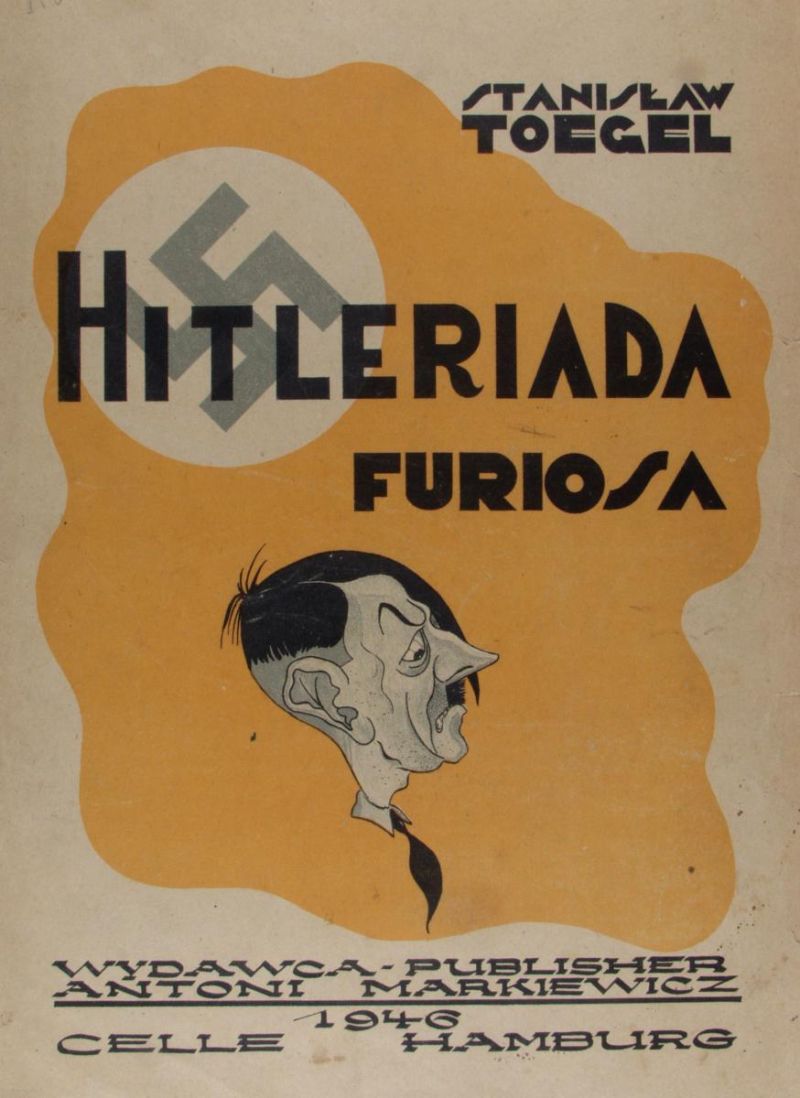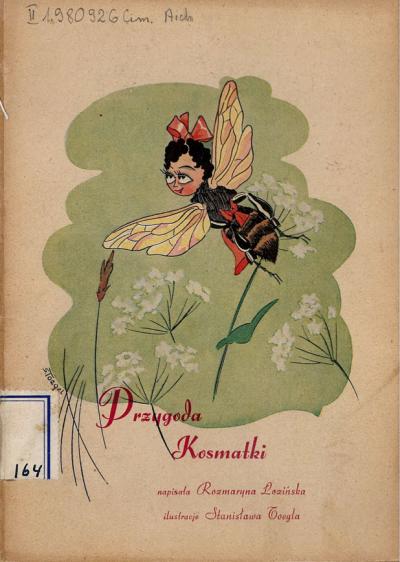Stanisław Toegel
Mediathek Sorted


![ill. 3: Camp newspaper „Słowo Polskie” [Polish Word] ill. 3: Camp newspaper „Słowo Polskie” [Polish Word] - Front page, No. 3, 1 September 1945, DP camp in Osnabrück.](/sites/default/files/styles/width_100_tiles/public/assets/images/3_lagerzeitung_1945.jpg?itok=mV-R5sE6)

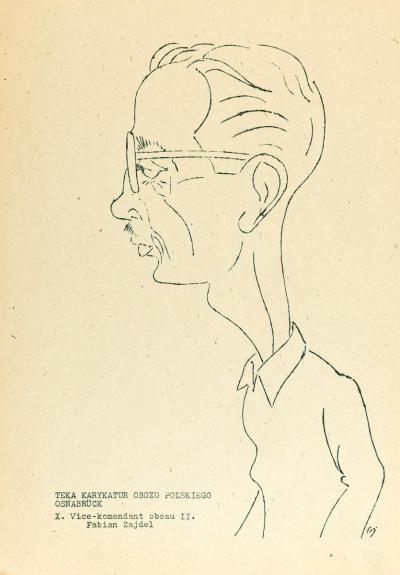
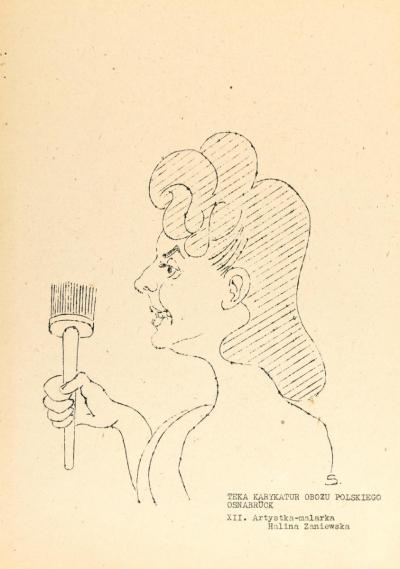
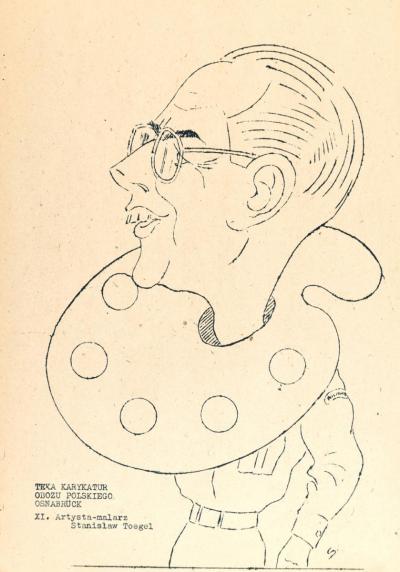
![ill. 8: Camp newspaper ‘Nasze Życie’ [Our Life] - Polish Weekly, no. 7, 21st February 1946, DP Camp Lippstadt. ill. 8: Camp newspaper ‘Nasze Życie’ [Our Life] - Polish Weekly, no. 7, 21st February 1946, DP Camp Lippstadt. - Title page with caricature, presumably of the British camp commander.](/sites/default/files/styles/width_100_tiles/public/assets/images/8_lagerzeitung_1946.jpg?itok=51rOVXDD)
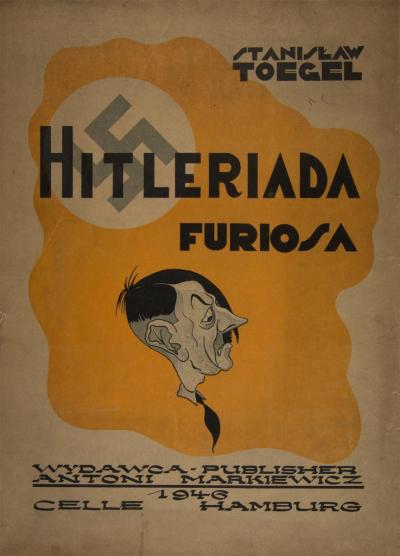

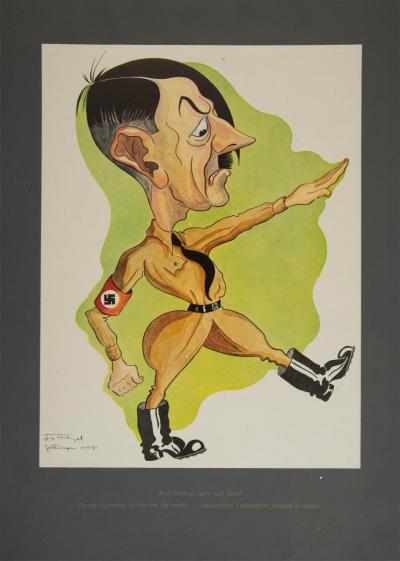
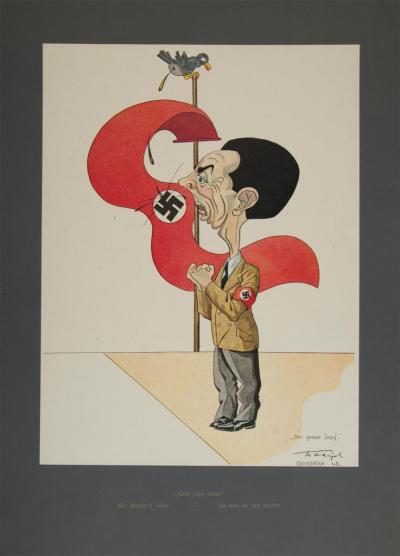
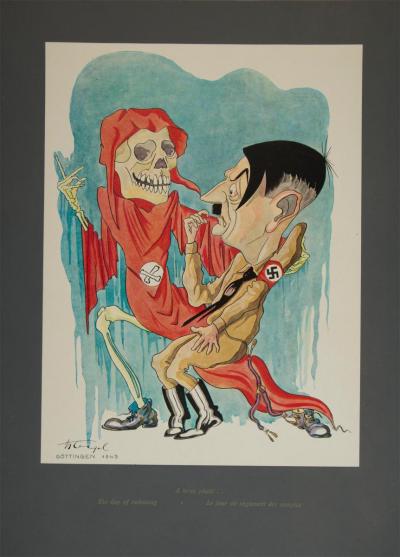

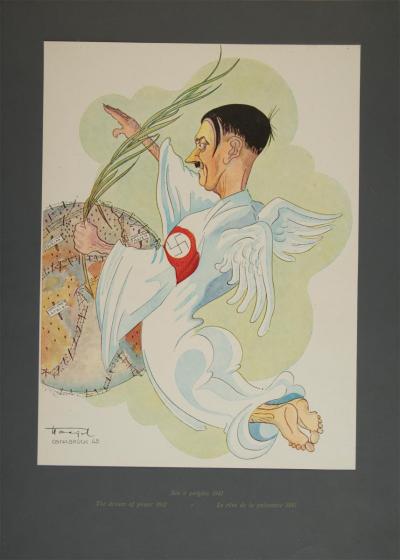
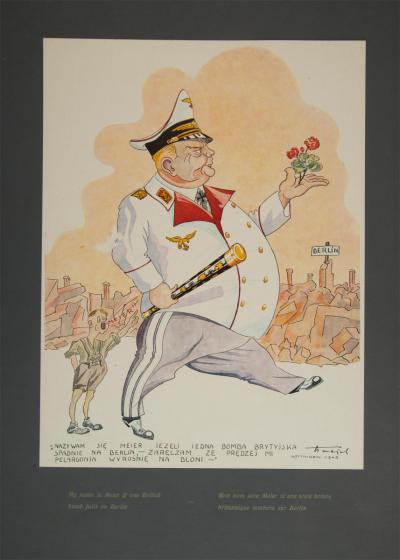
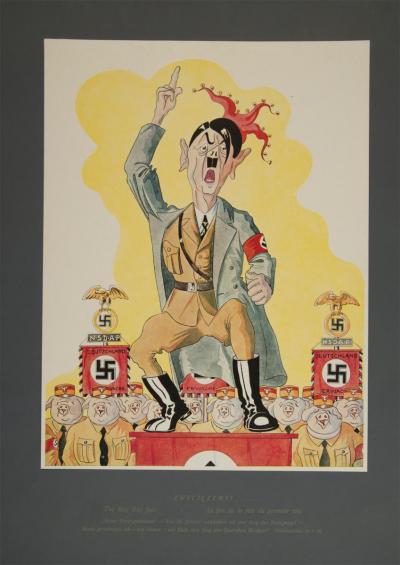
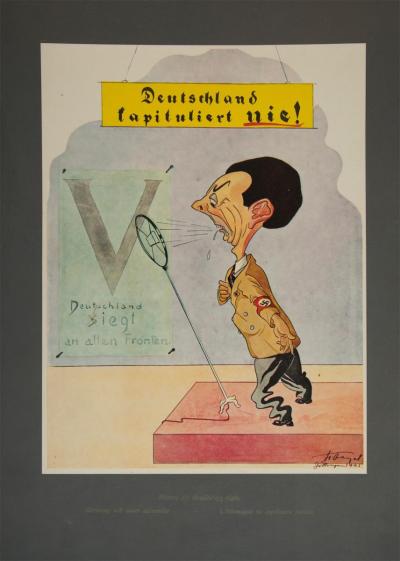
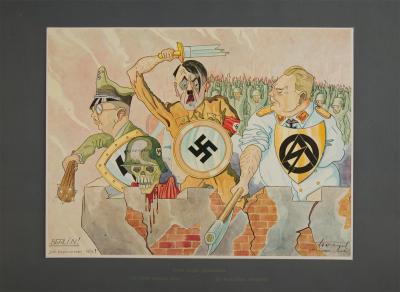


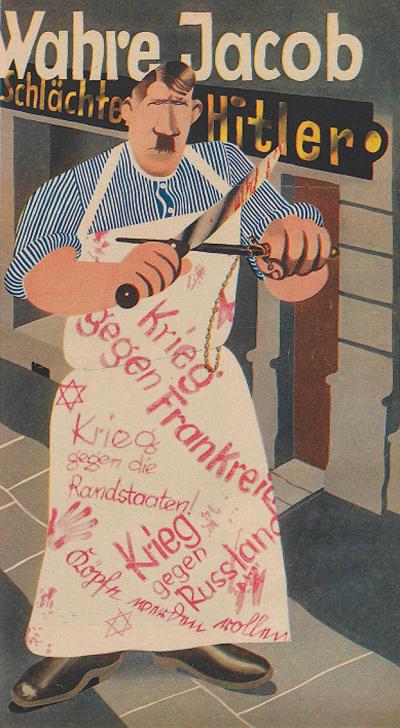
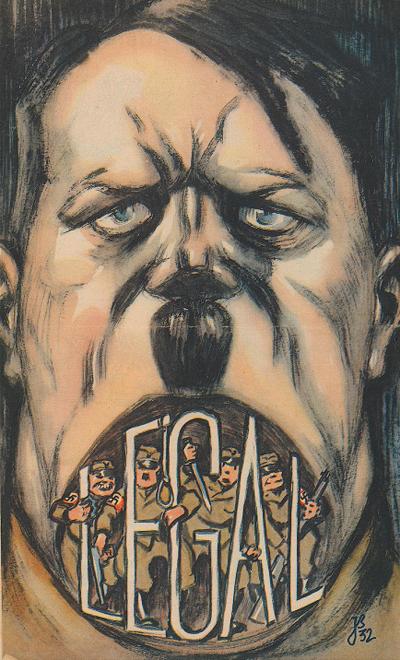
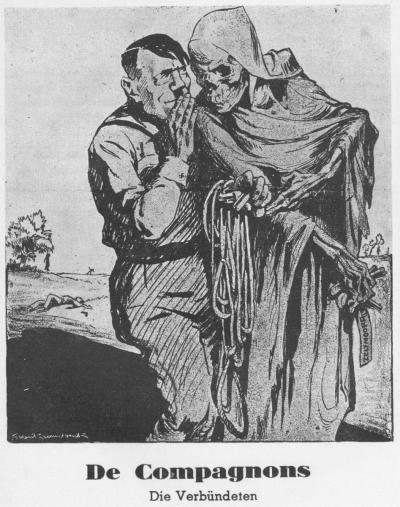

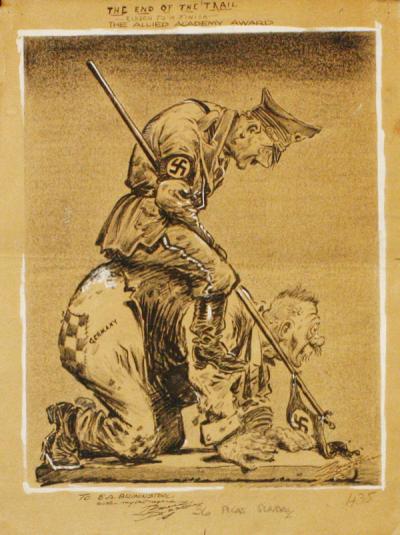
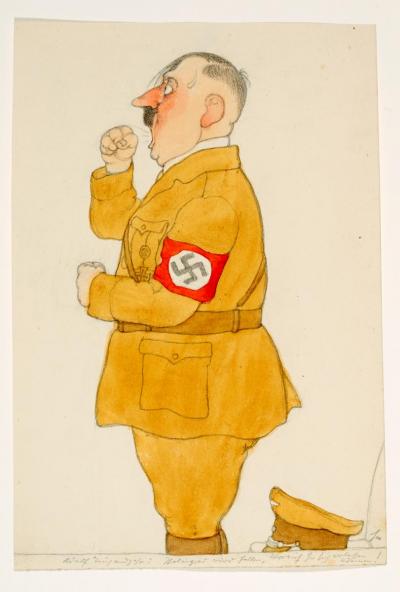
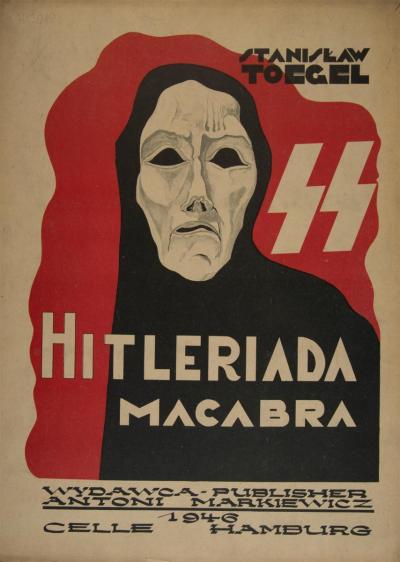

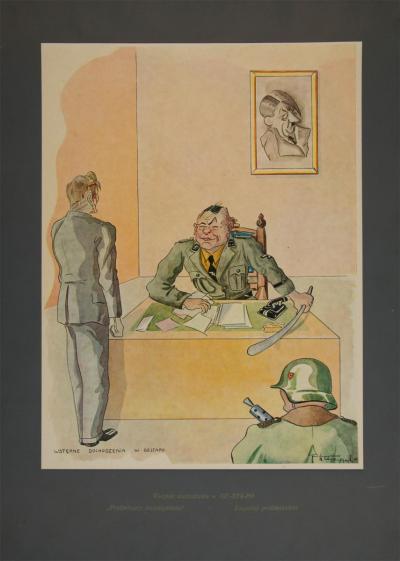
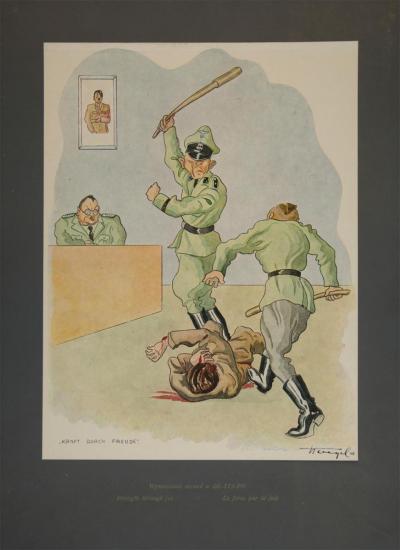
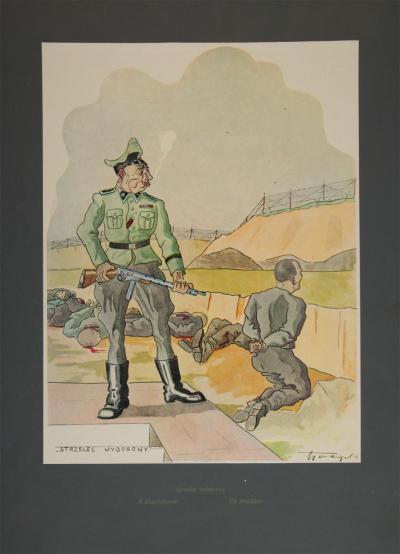
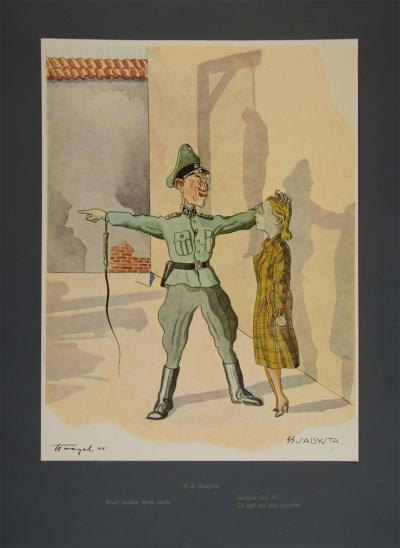
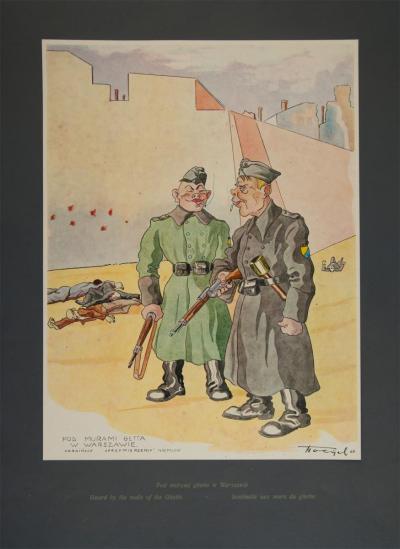
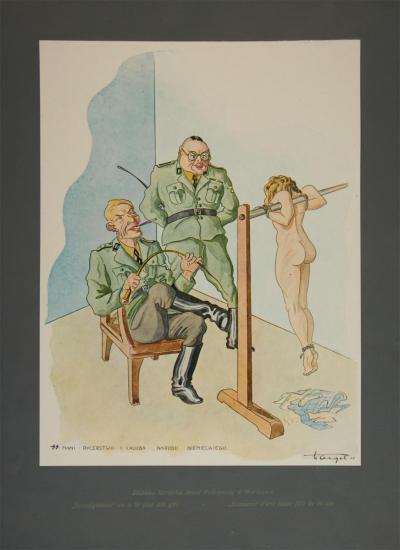
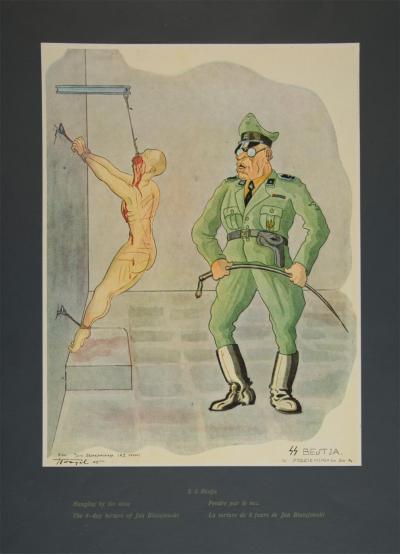
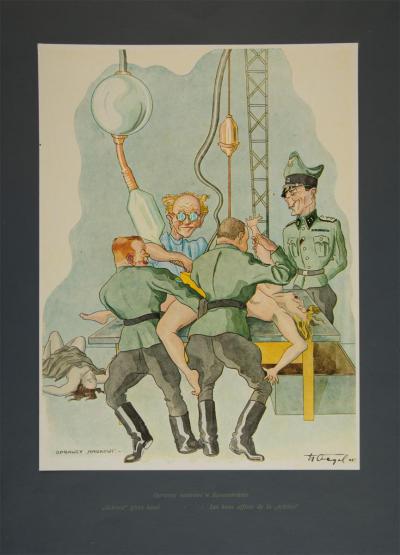
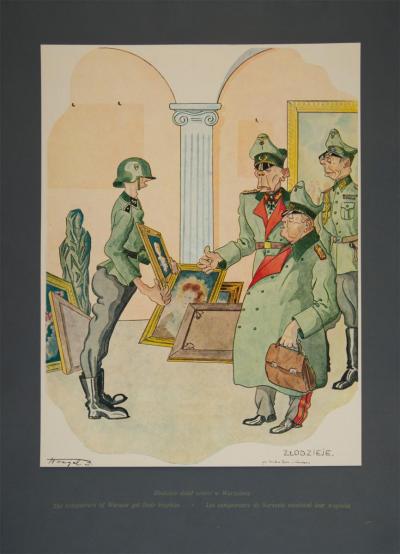
![ill. 11/1: Polski wojak na obczyźnie [The Polish soldier abroad] ill. 11/1: Polski wojak na obczyźnie [The Polish soldier abroad] - Cover. Published by Antoni Markiewicz, Celle 1946. Offset lithographs on dark grey passe-partout, 32.5 x 24.5 cm.](/sites/default/files/styles/width_100_tiles/public/assets/images/11_1_polski_wojak.jpg?itok=Ml04Vtju)
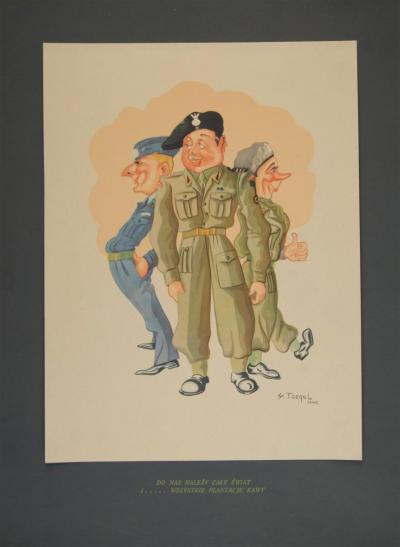

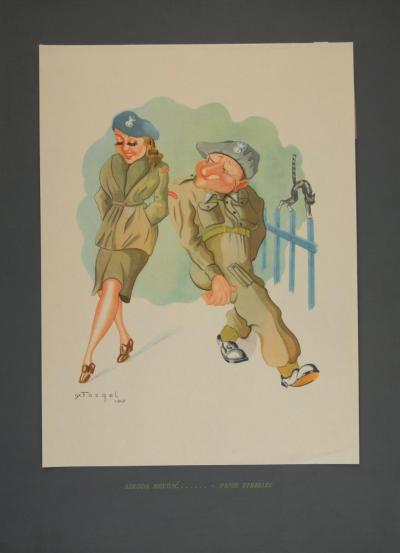
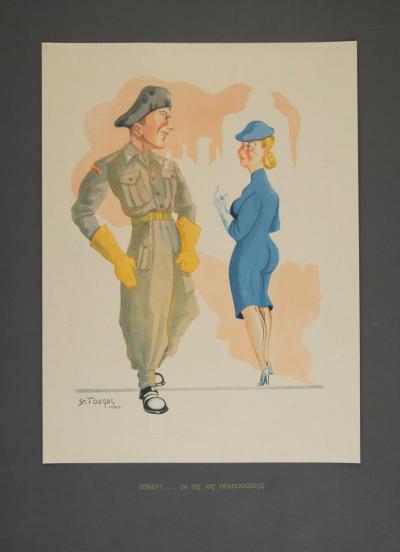
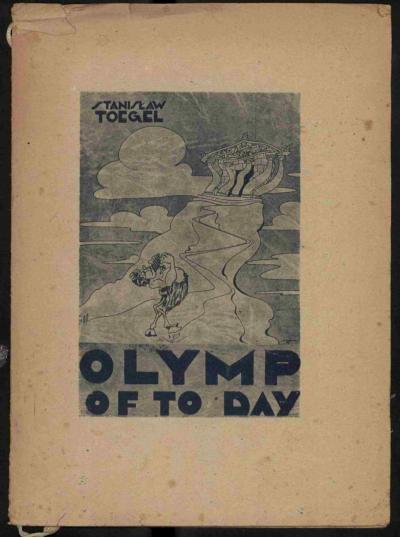
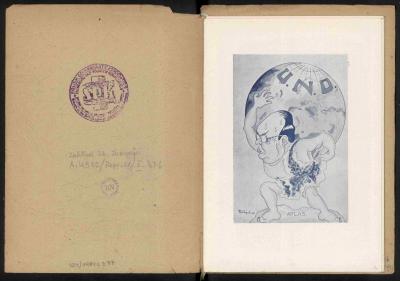
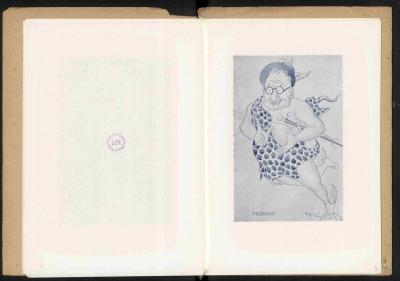
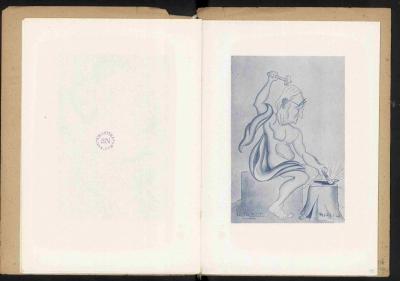

![ill. 14: Poster for the exhibition ‘Karykatury wojenne i polityczne’ [War and Political Caricatures] ill. 14: Poster for the exhibition ‘Karykatury wojenne i polityczne’ [War and Political Caricatures] - With posters by Stanisław Toegel in the Upper Silesian Museum in Bytom.](/sites/default/files/styles/width_100_tiles/public/assets/images/14_plakat_2015_bytom.jpg?itok=Oqh9ZRer)

Stanisław Toegel - Hörspiel von "COSMO Radio po polsku" auf Deutsch

Toegel’s cycles of caricatures were in no way intended for German readers, for the foreword was in Polish. The captions on the dark grey passe-partouts were also predominantly Polish, English and French – further evidence that they were mainly addressed to Polish readers who drew their reading material from the new Polish publishing houses and booksellers in Germany. The cycles of caricatures were conceived as art folders: there existed two editions, A and B. The A series were presumably autographed by the artist, for each sheet is numbered. In 1946 Toegel’s publishing house, Antoni Markiewicz, also published a folder containing four of his coloured printed caricatures entitled “Polski wojak na obczyźnie“ (Engl. The Polish soldier abroad). He had drawn these in the previous year during his time in the DP camp in Osnabruck and they were clearly aimed at comrades there. (ill. 11/1-11/5). The sequence only appeared in Polish and to date there is only one extant copy in the Polish National Library (Biblioteka Narodowa) in Warsaw. In 2008 a sequence of eight personally dedicated, water-coloured caricatures drawn by Toegel in 1946 showed up at an auction house in America. They portray Polish and American soldiers with their lady friends.
In 1947 Toegel began working with a new publisher in Celle, Tadeusz Starczewski, who also came from the circle of Polish displaced persons. It was said that during the German occupation of Poland in 1939/40 Starczewski was head of an active underground group called Szaniec (Engl. Bulwark) in Łódź: the group was attached to the radical national underground organisation, Związek Jaszczurczy (Engl. Federation of Lizards) that had been set up in October 1939 in Warsaw. Starczewski was a student at the time, and was known by his nickname Stary (Engl. The Old One). In summer 1940 he started an underground magazine, also called Szaniec, that changed its name in December to Pochodnia (Engl. The Torch). The printing house was in the apartment of the housekeeper to the priest of the congregation of Św. Jana Chrzciciela (St. John the Baptist) in Nowe Złotno. In March 1941 the Gestapo managed to track down the location of the printing house. Whereas all the priests attached to the church were arrested and sent to concentration camps, Starczewski managed to escape from the prison in ul. Sterlinga at Easter 1941. According to Starczewski, who was born in Łódź in 1911, he had been a chief editor at the ABC publishing house in Łódź from 1934 to 1939. From 1941 to 1943 he worked as a bookseller and publisher with his own printing press. In 1943 he was arrested once more and sent to the concentration camp in Auschwitz. From there he was moved to an outside camp in the Salzgitter suburb of Drütte, and spent the rest of the war as a political prisoner – he had a “red triangle” on his prisoner’s uniform – in the concentration camp at Bergen-Belsen from 8th July 1943 to 15th April 1945. Starczewski was registered in Celle on 1st November 1945. A short time later he applied for permission to set up a “printing house and sell books and periodicals in the Polish language to displaced persons in the camps”.
The first of his publications, which he edited himself, was a magazine for the Polish inmates in the DP camp. It appeared in 1945 under the title Strażnica. Czasopismo dla harcerzy (Engl. Watchtower. The Boy Scouts Weekly for the Polish Boy Scouts Association Abroad – the scout company in Celle (Związek Harcerstwa Polskiego poza Granicami Kraju – Komenda Hufca Harcerzy [Celle]). Strażnica was also the name of the publishing house run by Starczewski in Celle. In 1947 he published several paperback titles including a collection of poems entitled “Szlak tęsknoty” (Engl. Traces of Yearning) by the Polish pilot Zygmunt Witymir Bieńkowski (1913-1979), who had been shot down over Wesel in 1945 and sent to a POW camp; “Partyzanckim szlakiem” (Engl. The Partisan’s Route) by Jerzy Szczepańczyk; “Skarb śląski” (Engl. The Silesian Treasure) by the writer and resistance fighter, Sofia Kossak-Szczucka (1889-1968); “O zmierzchu nowele” (Engl. Stories by Nightfall) by Zbigniew Topór-Krygler, a soldier in the Polish Home Army; “Nowele wybrane” (Engl. Selected Short Stories) by the Polish writer, Bolesław Prus (1847-1912); and also in 1948 a 68-page paperback in German entitled “Der kleine Betriebsberater in Organisationsfragen” (Engl. A Short Business Advisor on Organisation Questions) by Erich Gammelin. In 1948 Starczewski once mre applied for permission to publish a magazine for displaced persons in Polish entitled Strażnica ( it only lasted until 1949). In the same year Starczewski left Celle for an unknown destination, and disappeared without trace.




















































































